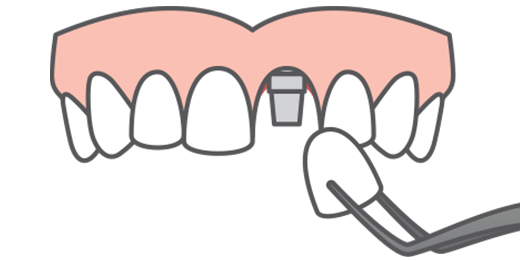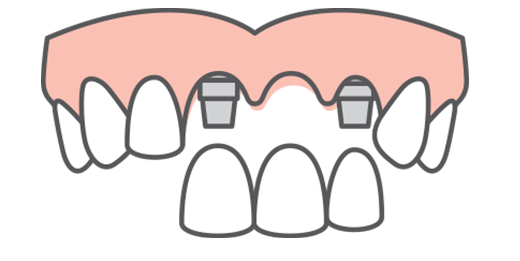The Anatomy of a Dental Implant
Just hearing the name, you would assume that a dental implant is simply a replacement tooth. In reality, there’s much more to the dental implant. A dental implant is comprised of three different components including the fixture, the abutment, and the crown. These three elements of the dental implant give it the stability and longevity you would find in a natural tooth. Each of the three elements is imperative to the success and longevity of dental implants. Here’s a simple breakdown of each dental implant component:


- Dental Implant Fixture: The fixture is made from biocompatible, titanium alloy, which is placed where the missing tooth used to be. This small installation will provide lifelong support for the replacement tooth that will later be placed. However, first the fixture will need to fuse to the jawbone in a process known as osseointegration. This process is responsible for the durability and stability of implants because the bone will begin to heal and regenerate around the fixture. The bone regeneration and fibers that wrap around the screw hold the fixture tightly into place.
- Abutment: The abutment will be attached to the dental implant fixture after it has successfully fused to the jawbone. The abutment, also known as a post, acts as a connector between the fixture and the restoration that will eventually be placed there. The cap-shaped connector will sit on the fixture and protrude above the gums until a crown is attached.
- Crown: The crown, or the replacement tooth, will be what everyone sees when you smile. The dental prostheses are designed to perfectly blend in with the rest of your teeth. Everything from color and to shape is considered when creating the crown. In fact, it’s likely most people won’t even distinguish your tooth replacement from the rest of your teeth. If you’re missing multiple teeth, you can either use multiple crowns or use an implant-supported bridge.
Other options like dentures and dental bridges simply cannot match up to the strength of dental implants. These other tooth restoration options will often shift or become ill-fitting on patients. Fortunately, dental implants are secure once osseointegration occurs and don’t require any additional maintenance than natural teeth need. Brush, floss, and visit the dentist regularly to maintain your dental implants for the rest of your life.
